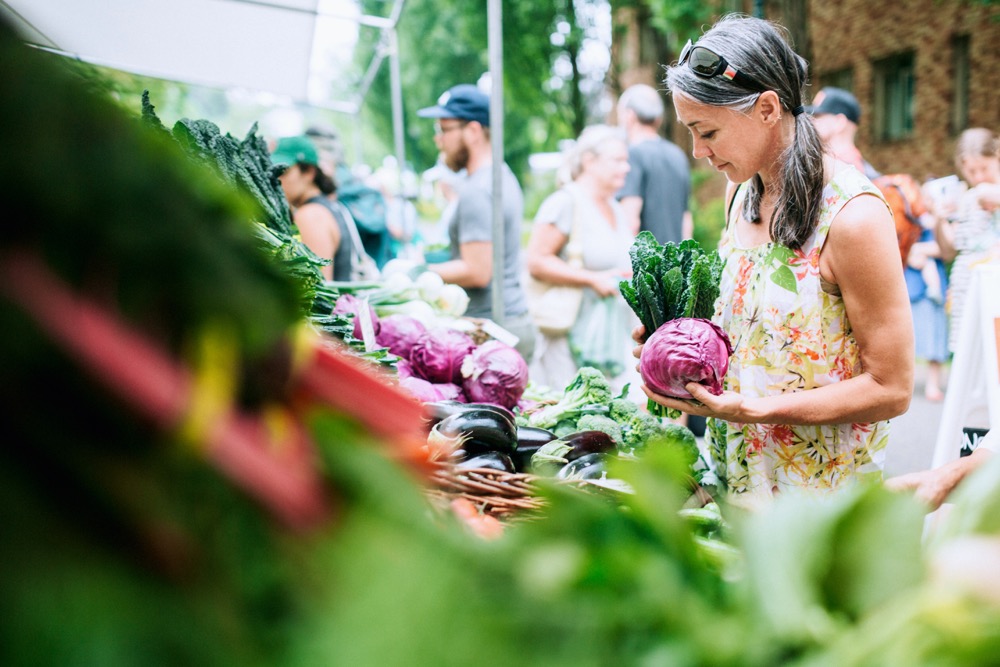How far will the local trend actually take today’s ag?
While the pandemic was still raging a year ago, Business Development Bank of Canada added statistical muscle to what so many others were observing all across the country. COVID-19 was great news for local food.
In its nation-wide survey, the bank found 21 per cent of Canadians had started buying more local products since the start of the pandemic, and a total 74 per cent said they’d buy even more in future.
Canada’s Food Price Report for 2021 also revealed a powerful new market driver for local. “Many consumers reported they had shopped locally in their own communities during the pandemic to support small business, and also because locally sourced food supply chains — especially in-season fresh produce — are less susceptible to border closures, trade disputes, and facility closures due to labour shortages,” the report stated.
It sounded like full speed ahead for local. But it hasn’t proved to be that simple.
Going deeper, a May 2021 survey from Dalhousie University’s Agri-Food Analytics Lab (AAL) found that while 75.2 per cent of Canadians wanted grocers to carry more local products, only 47.4 per cent intended to buy more local.
In other words, Canadians like the idea of being able to buy local more than they like actually buying it.
A June 2022 AAL study then found that when it combined its numbers for Saskatchewan and Quebec, only 17 per cent of respondents prioritized local foods for most of their meals every week.
The most important reasons those 17 per cent gave were to support farmers, the local economy and environmental sustainability. Very few respondents believed local foods were higher quality, more nutritious, more affordable, or even safer, the report said.
To AAL director Sylvain Charlebois, the take-home was clear. Canadians didn’t see that local foods could deliver more value to them as consumers, which meant that if the category was going to keep growing, local’s image needed serious work.
Lack of data
Consumers overall are price sensitive, and one reason why local’s share of the food market grew during the pandemic is that some consumers had higher disposable income, says James Vercammen, economist at the University of British Columbia.
But, Vercammen also says sales of local food in supermarkets didn’t change significantly during the pandemic. Instead, he concludes the rise in local’s market share reflected more buying outside of supermarkets. And that isn’t a large market.
“So I would be surprised if the market share of local food has risen by a significant amount during the pandemic,” Vercammen says.
Inflation
Canada’s economic outlook may also be tough news for local.
“If people lose their jobs over the next couple of years, it’s going to be very difficult to engage them in local foods, because it’s all going to be about survival,” says Charlebois.
That runs counter to previous AAL surveys that concluded young consumers are prepared to fork over more for locally grown produce. A 2020 study found over half of Generation Z willing to pay a premium greater than 10 per cent for locally grown produce, with only 15.9 per cent stating that they were unwilling to pay any premium at all.
Today, those findings have to be taken with a grain of salt as inflation forces buyers of all generations to reconsider their food buying decisions.
Food inflation ran over 10 per cent in 2022, and the most recent Canada’s Food Price Report predicts a five per cent to seven per cent food price increase in 2023, with the largest rises in vegetables, dairy and meat.
“These new generations never lived with high interest rates,” Charlebois points out. “It’s a wait-and-see scenario.”
Smart shoppers
Shoppers are tightening their food budgets, says Canada’s Food Price Report 2023, which means they’ll adopt strategies like buying more frozen instead of fresh fruits and vegetables as well as less premium meat.
That’s negative for local, and UBC’s Vercammen adds that with ongoing pressure on household income due to food price inflation, plus higher debt payments because of interest rates, the trend may be persistent.
“Apparently consumers are increasingly switching away from national brands towards less expensive store brands,” Vercammen says. “This makes me think that consumers will also be switching away from relatively expensive local food over the coming year.”
Local food producers will be under pressure to keep their offerings as affordable as possible, Charlebois agrees.
And local faces other challenges too. Even in B.C., the birthplace of the local food movement, there are barriers that go well beyond current economics, such as the high cost of land, a significant hindrance to the growth of local farms.
“With only small-scale production, we have limited processing capacity, and this limited capacity prevents supply from increasing. In other words, there is the classic chicken-and-egg problem,” Vercammen says.
Are imports really so bad?
While fruits and vegetables are B.C.’s main markets for local food, most of the hort crops that its shoppers buy (excluding apples, potatoes and some hot house crops) continue to be imported.
“Local supply is highly seasonal, and this seasonal supply must increasingly compete with imported produce,” Vercammen says. “In other words, even the share of local fruits and vegetables is relatively small, especially off-season.”
And even traditional seasonal offerings are disappearing, he’s found.
As a big fan of apples, Vercammen always looked forward to late October when fresh Okanogan apples arrived and supermarkets promoted them and sold them at discounted prices for a month or so. In recent years, however, the promotion and price discounts for bulk sale of newly harvested local apples largely disappeared, he says.
“Who is to blame? I expect it is a combination,” Vercammen says, yet it suggests the mass of consumers aren’t exactly hankering for the local crop, and that the supermarkets find it more profitable to sell the same apples all year. Both suggest an uphill battle for the local sector.
~Richard Kamchen~
Country Guide


